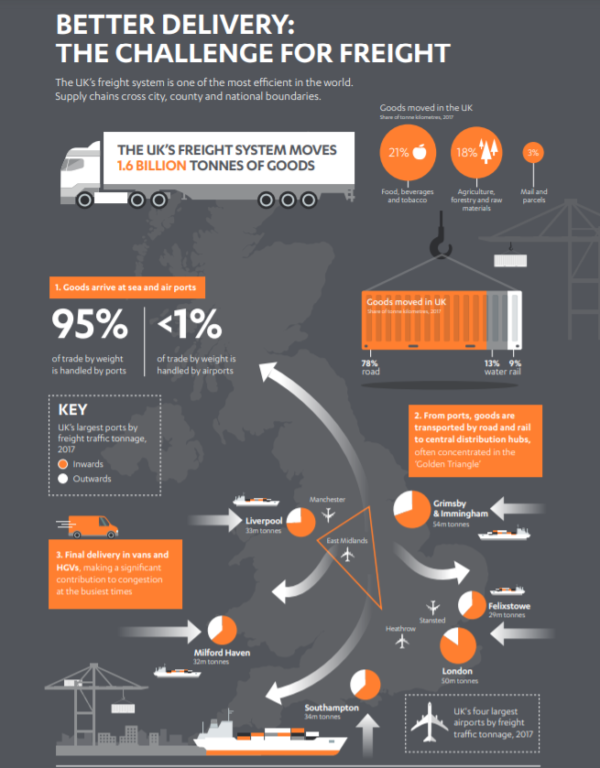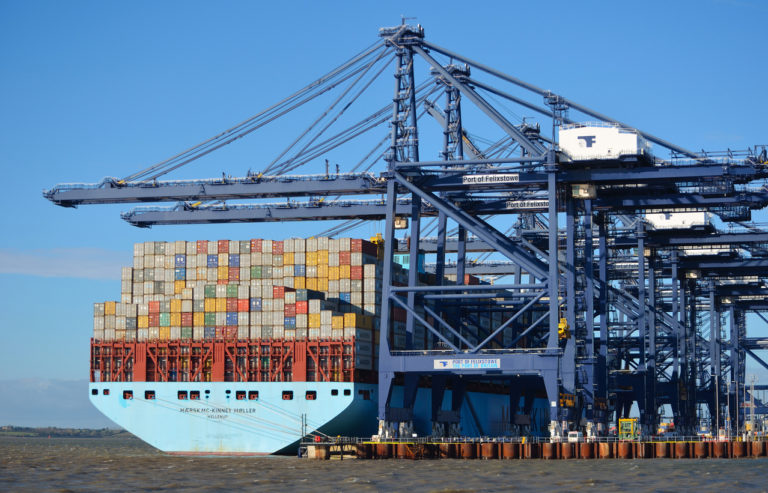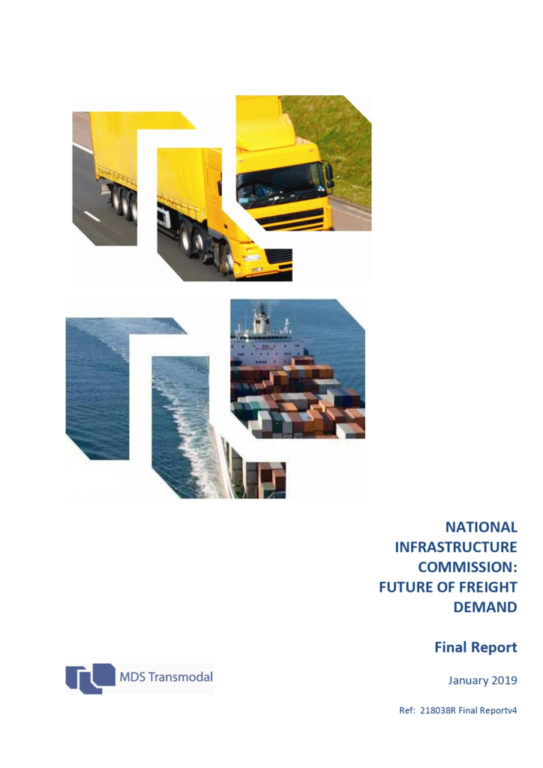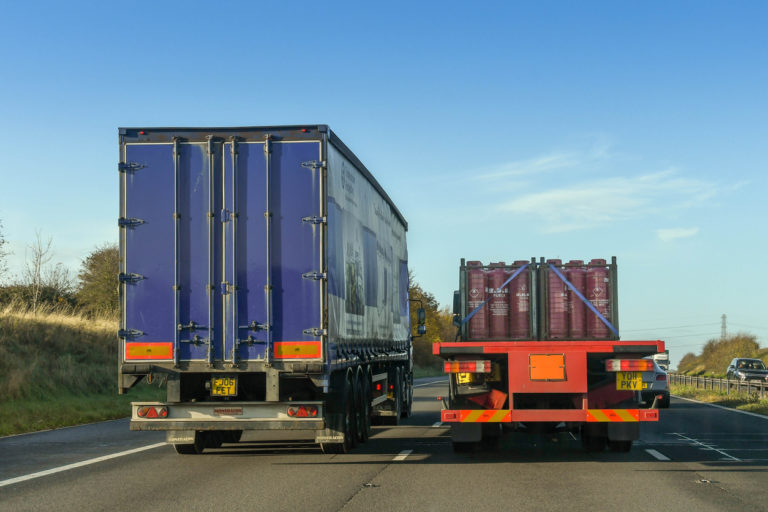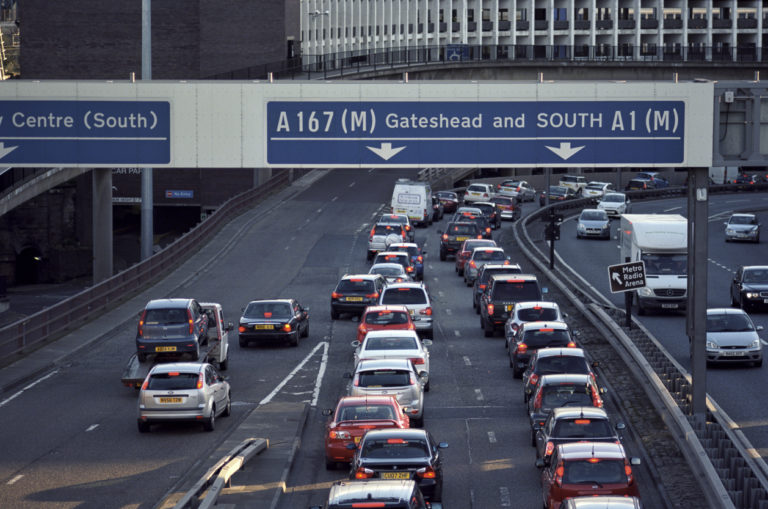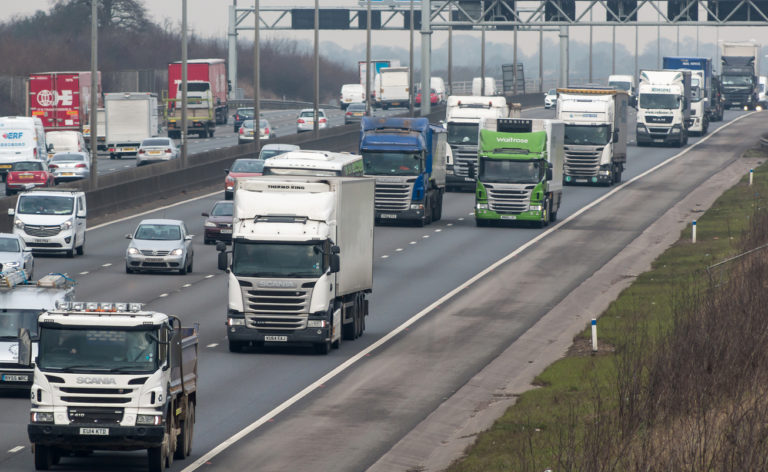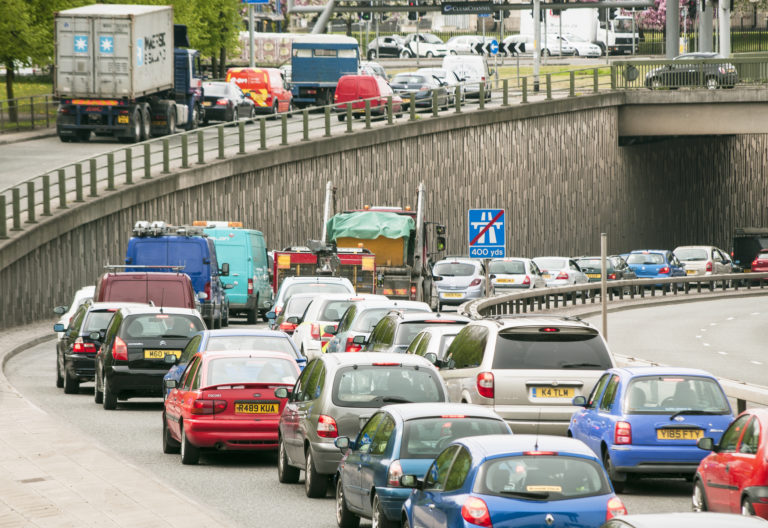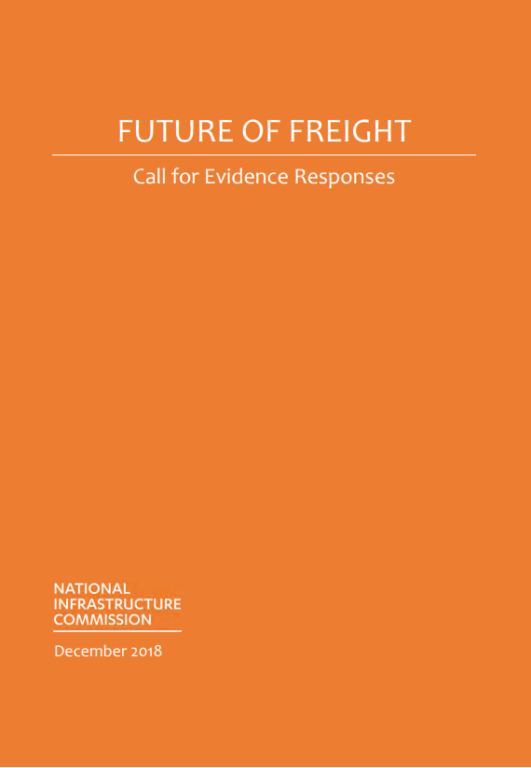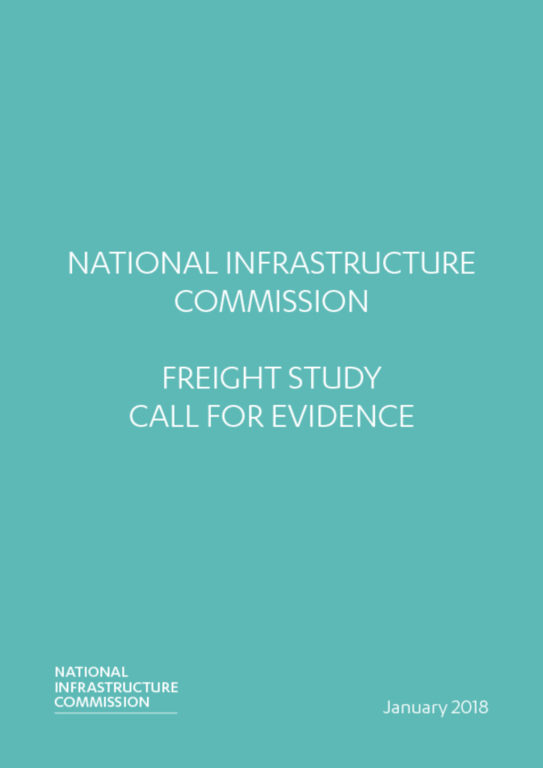Freight
Status:Final report complete.
Exploring how to decarbonise road and rail freight by 2050 and manage its contribution to congestion.
Summary
In November 2017 the Government asked the Commission to conduct a new study on the future of freight.
The Commission’s study reviewed options to improve the existing infrastructure and recommended ways to use new technologies and processes to transform how freight moves by road and rail, in towns and cities, cross-country and into and out of ports and airports.
A Call for Evidence was issued in January 2018 and an interim report was published on 21 December 2018.
The final report of the study – Better delivery: the challenge for freight – found that through the adoption of new technologies and the recognition of freight’s needs in the planning system, it is possible to decarbonise road and rail freight by 2050 and manage its contribution to congestion. Achieving this requires government to outline clear, firm objectives, and begin working with the energy sector, freight industry and local areas to ensure that the infrastructure required for alternative fuels and land for efficient freight operations is available when and where it is needed.
Next Section: Facts & Figures
This infographic summarises the volumes of freight transported in the UK and the challenges involved in decarbonising the system.
Facts & Figures
This infographic summarises the volumes of freight transported in the UK and the challenges involved in decarbonising the system.
Next Section: Recommendations
The study makes six recommendations to help ensure an efficient, low carbon freight system, that manages its impacts on congestion and utilises technology to continue to provide a world class service that supports the UK’s growth and global competitiveness.
Recommendations
The study makes six recommendations to help ensure an efficient, low carbon freight system, that manages its impacts on congestion and utilises technology to continue to provide a world class service that supports the UK’s growth and global competitiveness.
Government should commit to decarbonising road freight by 2050
Government should commit to decarbonising road freight by 2050, announcing plans by the end of 2021 to ban the sale of new diesel powered HGVs no later than 2040. To support this:
- government should, in conjunction with distribution and transmission network operators, prepare detailed assessments of the infrastructure required to enable the uptake of battery electric or hydrogen HGVs, including the refuelling requirements at depots and key rest areas on major freight routes. For battery electric, these assessments should include enhancements to distribution networks alongside alternatives to reinforcement, such as energy storage. For hydrogen, these assessments should cover the production, storage and distribution of hydrogen, including any dependency with the decarbonisation of the heating supply system.
- Ofgem, as part of the next energy distribution price review (RIIO‑ED2) starting in 2023, should include a clear requirement for distribution network operators (in partnership with the freight industry) to map out the infrastructure upgrades and opportunities for alternative solutions, such as energy storage, required to enable large scale freight van charging at depots.
A full strategy for rail freight to reach zero emissions by 2050
Government should undertake detailed cross‑modal analysis, using a corridor‑based approach, of the long term options for rail freight’s transition to zero emissions, including low carbon rail services and the scope for road based alternatives. It should then publish, by the end of 2021, a full strategy for rail freight to reach zero emissions by 2050, specifying the investments and/or subsidies that it will provide to get there.
Local authorities should include urban freight within their infrastructure strategies
To help manage peak time congestion on the urban transport network, local authorities should include a plan for urban freight within the infrastructure strategies they are developing. These plans should review local regulations to incentivise low congestion operations, consider the case for investments in infrastructure such as consolidation centres, and identify the land and regulatory requirements of new and innovative low congestion initiatives.
New planning practice guidance on freight for strategic policy making authorities
Government should produce new planning practice guidance on freight for strategic policy making authorities. The guidance should better support these authorities in planning for efficient freight networks to service homes and businesses as part of their plan making processes. This new planning practice guidance, which should be prepared by the end of 2020, should give further detail on appropriate considerations when planning for freight, such as the need to:
- provide and protect sufficient land/floorspace for storage and distribution activities on the basis of population and economic need, with particular consideration for the floorspace requirements for last mile distribution and consolidation centres;
- support the clustering of related activities within a supply chain, minimising the distance that goods must be moved and maximising the potential for efficient operations;
- maximise the potential for freight trips to be made at off peak times; and
- accommodate deliveries and servicing activity at the point of delivery.
A data standard for freight data collection to support local authorities
Government should develop a data standard for freight data collection to support local authorities, outlining the requirements for technological capability, data requirements, and data format. Such a standard must seek to ensure consistent data quality and format across technologies to allow regional and national aggregation, and should be complete by the end of 2020.
Establish a Freight Leadership Council
Government should establish a new bi‑annual ‘Freight Leadership Council’, inviting representatives from BEIS, DfT, MHCLG, DEFRA and HM Treasury, devolved administrations, all freight modes and parts of the supply chain. This Council’s main focus should be on strategic, long term issues – specifically supporting decarbonisation of road and rail freight by 2050. This Council should hold its first meeting before the end of 2020.
Terms of reference
Freight is the transportation of commercial goods by road, rail or other modes. Good freight connectivity is important for increasing economic growth, competitiveness and productivity. Freight also has an impact on other infrastructure users, whether rail passengers or road users.
A reassessment of freight connectivity is needed to tackle rising congestion, especially in urban areas, impacted heavily by a recent increase in LGV traffic. This has been driven by major shifts in consumer behaviour, such as an increase in online shopping and demand for deliveries, as well as growth in other LGVV traffic such as service vehicles.
With the revolution in road transport that new vehicle and digital technologies are going to bring, the increasing availability of data, and alternative business models in the passenger sector (e.g Lyft, Uber), the government needs to work alongside industry to consider what these changes mean for regulation and infrastructure. This is necessary to harness the productivity gains offered by these new technologies.
Decarbonisation of freight is also imperative to meeting the Government’s targets on air quality and carbon emissions. Lorries cause a third of the UK’s transport CO2 emissions and simple new technologies may have a significant impact in reducing the harmful pollutants of freight. An increase in availability of low emission road vehicles has increased the possibility of low emission HGVs in the future, so it is important to consider what infrastructure may be required, alongside other approaches to decarbonisation.
The Government asks the Commission to:
a) Assess the impact freight has currently on urban congestion and the UK’s carbon emissions, and the future of inter-city freight movements;
b) Make recommendations on the future of freight infrastructure and regulation to reduce the effects of congestion on productivity, particularly in urban areas, and ensure wider freight connectivity supports economic growth;
c) Consider the potential of emerging technologies to improve the efficiency, productivity and environmental impact of UK freight;
d) Make recommendations on the future of our roads and highways to be able to adapt to new technology, e.g platooning;
e) Consider the wider economic role of freight and how its economic benefits are factored into government infrastructure investments;
f) Take into account the increase in non-fossil fuels for road vehicles, and consider options for decarbonising the freight sector including the infrastructure and regulation needed for low emission haulage.
The study should work alongside the NIC’s assessment of the country’s long-term infrastructure needs for its National Infrastructure Assessment (NIA).
The study should focus on the effect of congestion on the efficiency of freight movements and emissions, the impact this has on the economy, and the opportunities, including those offered by innovation, to address these issues.
Issues relating to border controls and customs, and issues relating to the UK’s exit from the EU, are out of scope.
In carrying out its study, the government asks the Commission to:
a) Consult widely with relevant experts, including the Department for Transport, Highways England, Network Rail, Department for Business, Energy and Industrial Strategy, Department for Environment, Food and Rural Affairs, the rail freight and the haulage industries, and key customers and distributers;
b) Work alongside Metro Mayors as they develop their city-region infrastructure assessments;
c) Consider how freight transportation will change in the next 10-20 years;
d) Ensure recommendations are consistent with the Commission’s fiscal remit;
e) Ensure recommendations consider other users’ needs for infrastructure;
f) Ensure recommendations work towards the government’s air quality and carbon emission targets.
The Commission should undertake a two-stage approach to the study:
a) An interim report to be published in Autumn 2018;
b) The final report to follow in Spring 2019.
Next Section: Supporting evidence
The study was supported by an open call for evidence and a number of expert papers and technical data:
Supporting evidence
The study was supported by an open call for evidence and a number of expert papers and technical data:
- Future of freight: responses to call for evidence
- Reducing the environmental impact of freight – CEPA and Frazer-Nash
- The Value of Freight – Vivid Economics
- Managing Congestion – WSP
- Managing Congestion evidence report – WSP
- Appendix (Intervention Dashboards), Managing Congestion evidence report – WSP
- Future of Freight Demand – MDS Transmodal
- Freight Study impact and costing note.
Better Delivery: the challenge for freight
The Commission’s report highlights the action needed to enable the UK’s freight networks to meet growing demands for fast deliveries while also reducing its impact on congestion and the environment.
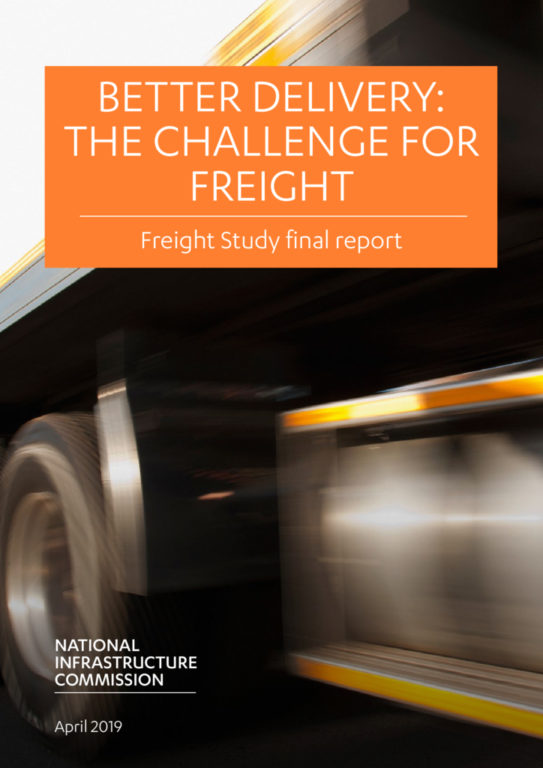
Latest Updates

Coming up in 2024
This page shows a calendar reflecting the latest expected dates for Commission reports, publications and events. You can also sign up to receive our quarterly newsletter by entering your email address in the box at the foot of each website page.
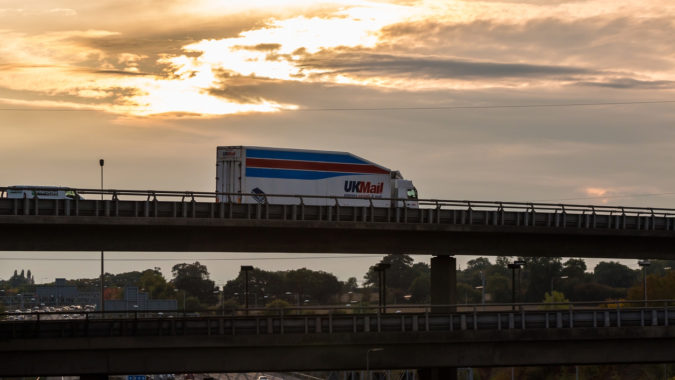
Government responds to Commission’s study on future of freight
The government has today (4 August 2021) published its formal response to the Commission’s 2019 study, Better delivery: the challenge for freight. This study found that through the adoption of new technologies and the recognition of freight’s needs in the planning system, it is possible to decarbonise road and rail freight by 2050 and manage...
Freight Study – letter from the Chancellor to Lord Adonis
Letter from the Chancellor of the Exchequer to chairman of the National Infrastructure Commission Lord Adonis on plans for a study into freight.
